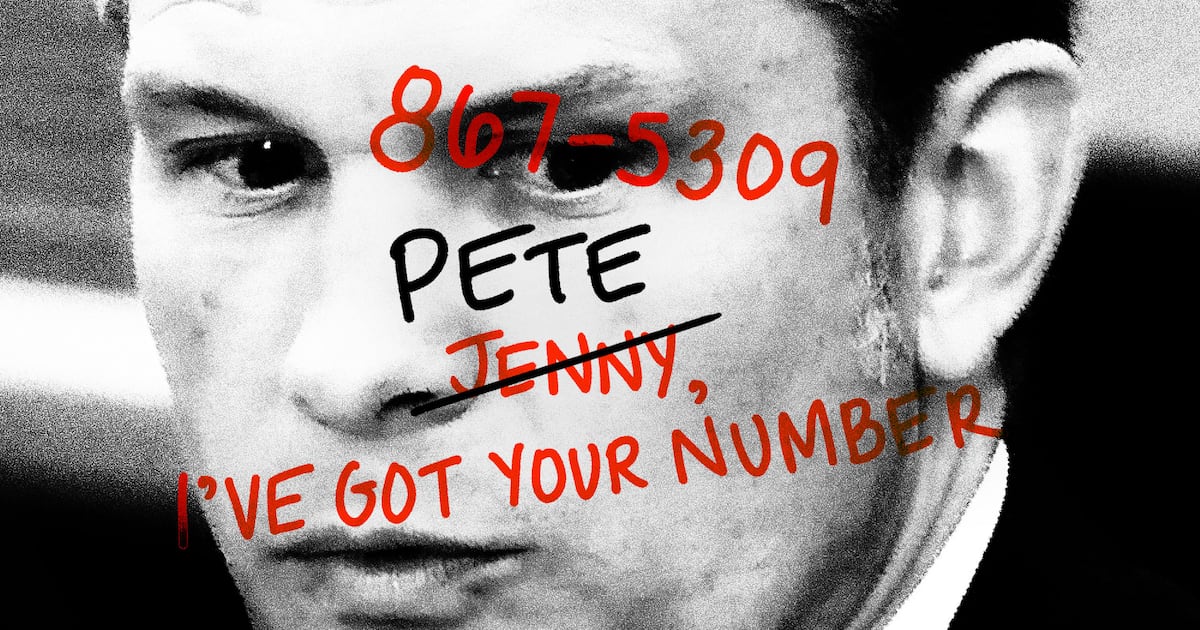The Parisian street artist JR posts stuff constantly, but not on Facebook or Twitter. Like a Gallic Banksy, he’s made a career of gluing propaganda-size posters, most of them portraits, onto empty plots of urban landscape. In the mid-2000s, the 30-year-old provocateur secured his reputation by fly-posting photographs of immigrant rioters on the walls of Paris’s bougiest neighborhoods.

Take that, baguette eaters!
JR’s latest gambit, the subject of the documentary Inside Out: The People’s Art Project, airing Monday night on HBO, has the artist-provocateur handing the wheat paste to the people. As the film opens, we see JR center stage at the 2011 TED conference as he announces his new initiative, “Inside Out.” With evangelical zeal, he invites the applauding audience to join him in harnessing “the power of paper and glue.” “Inside Out,” he tells them, will dispatch a mobile photo booth to cities and towns around the world; participants will receive poster-size versions of themselves and of people they admire. Pictures are to be posted by the recipient, JR intones, “in a place with meaning.”
And so a movement begins, funded by sales of JR’s artworks, which command five figures in galleries. (The movie skirts all discussion of his market.) We watch JR and his acolytes point lenses on the poor and oppressed in Francophone countries such as Tunisia and Haiti, and on a dust bowl of an Indian reservation in North Dakota. So far, 135,000 models have posed for JR’s crew.

Directed by Alastair Siddons (Turn It Loose, In the Dark Half), the movie introduces us to those who, for political, personal, or social reasons, hope that propaganda-size posters will change their lives—or at least lift their spirits. But the film’s lack of drama and narrative drive—it’s five minutes of Benetton ads puffed up into a 68-minute running time—leaves us feeling not only the weight of the project’s apparent futility but also an itchy contempt for the attention-starved underdogs mugging for JR’s camera.
Witness Tunisia in early spring of 2011, two months after dictator Zine El-Abidine Ben Ali is overthrown. A band of idealists seize Inside Out as an opportunity to replace their deposed tyrant’s blown-up visage—removed by the people during riots and protests—with photos of everyday citizens. Yet all is not copacetic with the locals: the Inside Out team is confronted by fellow Tunisians who consider the removal of Ben Ali’s pictures triumph enough. “They want to impose images and ideas on us,” complains one of the many men and women gathered to deface and remove the freshly glued portraits. And why not: two years on, oversize pictures of the people have not prevented debilitating unemployment or threats of Sharia-based theocratic rule.
The documentary suggests, if unintentionally, that those entering JR’s orbit are not out to change the world but rather to see themselves writ large. His followers gaze Narcissus-like upon their own 26-by-53-inch reflections and praise the man who made this grand-scale self-love possible.
Only in the final minutes does the film make glancing reference to the shortcomings of JR’s project, when a young Haitian delivers a bitter monologue about his daily fight against hunger, a problem no poster campaign is going to solve.

As for JR himself, we’re offered minimal bio via footage of a teenage guerrilla artiste sneaking onto Parisian rooftops to express himself in spray paint. What little else we know comes from other sources: that he grew up in one of the city’s western suburbs, that his mother is Tunisian and his father European, and that the family lived in a cramped apartment. In public and throughout the film, the lanky Frenchman appears in a uniform of fedora, sunglasses, and 5 o’clock shadow. He could pass for a hipster in any Parisian bistro.
Who is JR? How does he pull this stuff off? The movie’s agglomeration of up-with-people vignettes leaves key questions unanswered. Among the most pressing: can the wheat in wheat paste feed the hungry?




